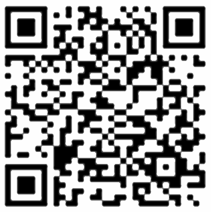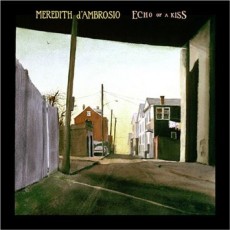
Daily Dose Of Jazz…
Meredith D’Ambrosio was born into a musical family in Boston, Massachusetts on March 20, 1941. She studied piano and voice from age six and ultimately studied at the Boston Museum School in 1958-59, pursuing a career in painting as well as music.
Meredith was offered the chance to tour Japan with John Coltrane but turned down the offer. Her first major recording for Spring Records didn’t happen for more than a decade later with her husband Eddie Higgins. Two more albums followed her debut recording three years later in the early Eighties for Shiah and Palo Alto Records. She has since released a dozen albums on the Sunnyside Records label from 1985 to 2006. During this period she recorded with Lee Konitz, Fred Hersch, Ben Riley, Erik Friedlander, Jay Leonhart and Gene Bertoncini among others.
She was voted in the Top Five for Talent Deserving Wider Recognition category for Female Vocalist in Down Beat International Critics Jazz Poll from 1982 to 1985 and from 1987-1991. In 1994, D’Ambrosio was the featured guest on Marian McPartland’s syndicated radio program Piano Jazz. Although she worked primarily as a jazz singer and pianist, she is also well known as a composer, lyricist, and teacher.
A respected visual artist, watercolorist, creator of eggshell mosaics and calligrapher, she took off from recording to concentrate on painting, touring, performing at festivals and teaching. She re-emerged in 2012 recording By Myself, a collection of 14 songs by the late composer Arthur Schwartz, her only album of 19 dedicated to a single composer and her solo piano accompaniment. Vocalist Meredith D’Ambrosio continues to perform, record, tour, teach and paint.
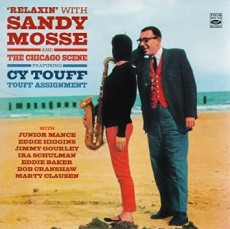
Daily Dose Of Jazz…
Cy Touff was born Cyril James Touff on March 4, 1927 in Chicago, Illinois. He started on piano at age 6 and went on to play xylophone and saxophone before settling on trumpet.
Serving in the Army from 1944 to 1946, while in the military Touff played trombone. After the war he switched to bass trumpet and worked with Woody Herman and Sandy Mosse among others. He joined Herman’s band in 1953 and in 1954-55 played with a reduced version of the band that also included Richie Kamuca.
Touff and Mosse co-led an octet called Pieces of Eight from the late 1950s into the next decade. He also recorded as a leader for Pacific Jazz, Argo and Mercury record labels. Though he spent most of his life in Chicago, he was also well associated with West Coast jazz.
One of the few jazz musicians known as a bass trumpeter, Cy Touff passed away in Evanston, Illinois on January 24, 2003.
More Posts: trumpet
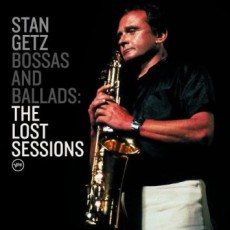
Daily Dose Of Jazz…
Stanley Getz was born on February 2, 1927 in Philadelphia, Pennsylvania but moved to New York City with his parents during The Depression. In school he was a straight A student finishing 6th grade close to the top of his class but his major interest was in musical instruments, and he felt a need to play every instrument in sight.
He played a number of them before his father bought him his first saxophone at the age of 13 and began practicing eight hours a day. Attending James Monroe High School, got accepted in the All City High School Orchestra of New York City, giving him a chance to receive private, free tutoring from the New York Philharmonic’s bassoonist, Simon Kovar.
By 1943 at age 16, he was accepted into Jack Teagarden’s band, becoming his ward because of his age. Getz also played along with Nat King Cole and Lionel Hampton, and after playing for Stan Kenton, Jimmy Dorsey, and Benny Goodman he became the Woody Herman’s soloist for two years in The Second Herd. Known as The Four Brothers alongside Serge Chaloff, Zoot Sims and Herbie Steward, he gained notoriety. Leaving Herman to strike out on his solo career, he led almost all of his recording sessions after 1950. However, it was during this period that having become involved with drugs and alcohol while a teenager, he was arrested in 1954 while attempting to rob a pharmacy to get a morphine fix.
Stan’s reputation was greatly enhanced by his featured status on Johnny Smith’s album Moonlight In Vermont and the single became a hit, staying on the charts for months. He went on to further popularity playing cool jazz with Horace Silver, Smith, Oscar Peterson and others. In his various bands were Roy Haynes, Al Haig, Tommy Potter, Dizzy Gillespie, Herb Ellis, Ray Brown and Max Roach.
In 1961 Getz became a central figure in introducing bossa nova to the American audience, teaming with guitarist Charlie Byrd who had just returned from Brazil. His album Jazz Samba with Charlie Byrd and Antonio Carlos Jobim became a hit, winning him a Grammy for Best Jazz Performance for Desifinado in 1963 that became his first million-copy seller. He would record Big Band Bossa Nova and Jazz Samba Encore! with Luiz Bonfa and get his second gold disc.
He recorded the album Getz/Gilberto with Jobim, Joao Gilberto and Astrud Gilberto winning two more Grammys for The Girl From Ipanema. What could have been a long partnership with his love affair with Astrud Gilberto, moving him away from bossa nova and back to cool jazz. By 1972, he recorded in the fusion idiom with Chick Corea, Tony Williams and Stanley Clarke.
In the mid-1980s he worked regularly in the San Francisco Bay area and taught at Stanford University as an artist-in-residence at the Stanford Jazz Workshop. In 1986, he was inducted into the Down Beat Jazz Hall of Fame. Tenor saxophonist Stan Getz died of liver cancer on June 6, 1991.
More Posts: saxophone
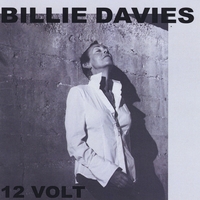
Daily Dose Of Jazz…
Billie Davies was born on December 10, 1955 in Bruges, West Flanders, Belgium. An autodidact and naturally talented she was surrounded by music from birth as her mother played the best in jazz and classical music. From the age of ten she was singing in choirs until her voice changed around the age of 22.
A few years later Davies would embark on learning to play the drums and became a professional jazz musician shortly after declining Max Roach’s invitation to attend Berklee College of Music. Her music is an improvisational conversation between musicians and musical instruments.
Billie has played with Leroy Vinnegar, John Handy, Joe Fuentes, Saul Kaye, Michael Godwin, Lee Elfenbein, Drew Waters, Pierre Swärd, Tom Bone Ralls, Manny Silvera, Oliver Steinberg, Daniel Coffeng, Adam Levy and has appeared all over the world.
Drummer, composer, director, arranger and bandleader Billie Davies has been honored as Jazz Artist of the Year at the Los Angeles Music Awards, drums in rhythms of jazz, cool jazz, Avant jazz and avant-garde and continues to mold it into her own neo-humanistic expressionist jazz.
More Posts: drums
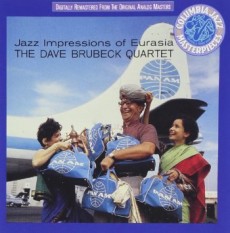
Daily Dose Of Jazz…
Dave Brubeck was born David Warren Brubeck on December 6, 1920 in Concord, California and grew up in Ione. His father, a cattle rancher, his mother Studied piano with intention to become a concert pianist, taught he son to play. He could not read music during these early lessons, attributing this difficulty to poor eyesight, but faked his way well enough that this deficiency went mostly unnoticed.
Brubeck entered the College of the Pacific studying veterinarian science but changed his major to music at the best of the head of zoology. Discovered that he could not read music he was almost expelled but his ability with counterpoint and harmony more than compensated.
In 1942, Brubeck was drafted into the U.S. Army, and serving in Europe played piano at a Red Cross show and was such a hit that he was spared from combat service and ordered to form a band. He created one of the U.S. armed forces’ first racially integrated bands, The Wolfpack. It was here that he met Paul Desmond in early ’44. He returned to college after discharge, completed his studies, worked with an octet and with an experimental trio with Cal Tjader and Ron Crotty, and often joined onstage by Desmond.
He recorded his first sessions in 1949 for Coronet Records, soon to become Fantasy Records owned by the Weiss Brothers. In 1951 he organized the Dave Brubeck Quartet with Paul Desmond on alto saxophone, taking up a long residency at San Francisco’s Black Hawk nightclub. During this period he recorded a series of albums and gained great popularity touring college campuses.
Dave signed with Fantasy Records, worked as an A&R man and brought in Gerry Mulligan, Chet Baker and Red Norvo. Discovering he only owned half interest in his own recording and not the label he moved to Columbia Records.
In 1959, the Dave Brubeck Quartet recorded Time Out, a seminal album that featured unusual time signatures that quickly went platinum and was the first jazz album to sell more than a million copies. A high point for the group was their 1963 live album At Carnegie Hall, arguably his greatest concert.
Over the next several decades Brubeck would record many albums, develop a jazz musical, The Real Ambassadors, working with Louis Armstrong, Lambert, Hendricks and Ross, and Carmen McRae, perform at the Monterey Jazz Festival, did a series of Jazz Impressions albums, and was the program director of all-jazz format WJZZ-FM radio.
Of his many honors pianist Dave was inducted into the California Hall of Fame, was honored with a Time Magazine cover that he felt should have gone to Duke Ellington, and received an honorary Doctor of Music degrees from the Eastman School of Music, Berklee College of Music and George Washington University.. He was honored by the Kennedy Center, was awarded the Miles Davis Award and Bruce Ricker and Clint Eastwood produced the documentary Dave Brubeck: In His Own Sweet Way.
Pianist and composer Dave Brubeck, considered to be one of the foremost exponents of cool jazz, passed away of heart failure, ironically, on his way to a cardiology appointment, on December 5, 2012, in Newark, Connecticut, one day before his 92nd birthday.
More Posts: piano


